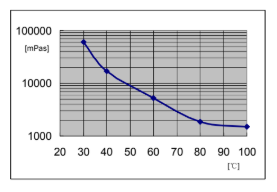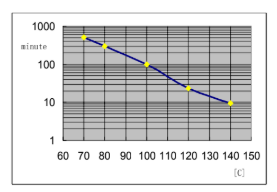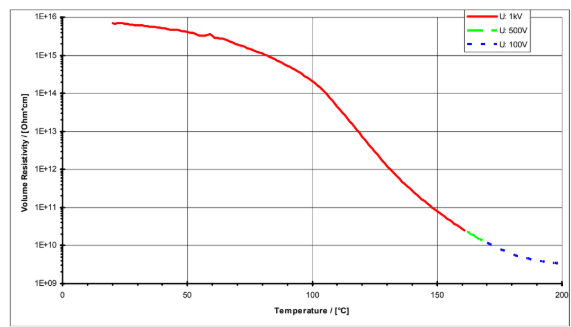Enhanced TDS
Identification & Functionality
- Chemical Family
- RTU Product Type
- Technologies
- Product Families
Features & Benefits
- Ready-to-Use Product Features
- Key Properties
- High mechanical and electrical properties at elevated temperature
- High thermal shock resistance
- Excellent toughness combined with elevated glass transition temperature
Applications & Uses
- Composites Processing Methods
- Cure Method
- Product End Uses
- Markets
- Applications
- Application Information
- Indoor electrical insulators for medium and high voltage, such as switch and apparatus components.
- Encapsulation of large metal parts.
- Processing Methods
- Automatic pressure gelation process (APG)
- Conventional gravity casting process under vacuum
- Processing Information
General instructions for preparing liquid resin systems
The following is the suggested preheat temperature of Araldite® Resin and Aradur® Hardener:
Araldite® resin: 50°C for 6 to 12 hrs
Aradur® hardener: room temperature
Mix all of the components together very thoroughly (the mixture temperature will be reached at or about 60°C. If lower mix viscosity is expected, preheat resin at higher temperature but not exceed 80°C under vacuum.
Proper mixing will result in:- better flow properties and reduced tendency to shrinkage
- lower internal stresses and therefore improved mechanical properties on object
- improved partial diskharge behavior in high voltage applications.
- For the mixing of medium to high viscous ARALDITE casting resin systems and for mixing at lower temperatures, it is recommended special thin film degassing mixers that may produce additional self-heating of 10-15°C as a result of friction. For low viscous ARALDITE casting resin systems, conventional anchor mixers are usually sufficient.
- In larger plants, two pre-mixers are used to mix the individual components (resin, hardener) under vacuum. Metering pumps then feed these premixes to the final mixer or a continuous mixer. The individual premix can be stored at elevated temperature (about 60°C) for up to about 1 week, depending on formulation. Intermittent agitation during storage is advisable to prevent filler sedimentation.
- Mixing time can vary from 0.5 to 3 hours, depending on mixing temperature, quantity, mixing equipment and the particular application. The required vacuum is 0.5 to 8 mbar. The vapor pressure of the individual components should be taken into account.
Specific instructions
Dilute leftover mix at the end of a shift with the resin component prior to storage overnight or over the weekend. Piping containing prefilled components or casting mixes should be cooled immediately after work to prevent sedimentation and/or undesired viscosity increases. This helps minimize material losses and cleaning work. Viscosity increase and gel time at various temperatures.
Mold temperature
APG process: 130-160°C
Conventional vacuum casting: 70-100°C
Demolding times (depending on mold temperature and casting volume)
APG process: 10 - 40 min
Conventional vacuum casting: 5 - 8h
Cure conditions (minimal postcure)
APG process (minimal postcure): 4h at 130°C or 3h at 140°C
Conventional vacuum casting: 12h at 130°C or 8h at 140°C- To determine whether crosslinking has been carried to completion and the final properties are optimal, it is necessary to carry out relevant measurements on the actual object or to measure the glass transition temperature. Different gel and postcuring cycles in the manufacturing process could influence the crosslinking and the glass transition temperature respectively.
Properties
- Physical Form
Technical Details & Test Data
- Cured Properties

Fig.1: Viscosity increase at 40, 60, 80 and 100 oC (measured with a Brookfield viscometer)

Fig.2: Initial mixed viscosity as a funtion of temperature
(measured with a Brookfield viscometer)
Fig.3: Geltime measured with Gelnorm
Instrument as a function of temperature
(DIN 16945/6.3.1)Property
Test Method
Unit
Value
Test Condition
Tensile strength ISO R 527 :1993 MPa 70 - 80 Cured for 6 hours at 80°C + 10 hours at 140°C
Elongation at break ISO R 527 :1993 % 1.0 - 1.3 Cured for 6 hours at 80°C + 10 hours at 140°C
E modulus from tensile test ISO R 527 :1993 MPa 9,000 - 11,000 Cured for 6 hours at 80°C + 10 hours at 140°C
Flexural strength ISO 178/01 MPa 110 - 125 Cured for 6 hours at 80°C + 10 hours at 140°C
Elongation at 23°C ISO 178/01 % 1.1 - 1.5 Cured for 6 hours at 80°C + 10 hours at 140°C
E modulus from flexural test ISO 178/01 MPa 9,000 - 11,000 Cured for 6 hours at 80°C + 10 hours at 140°C
Critical stress intensity factor (Kic) PM 216/89 MPa·m½ 1.8 - 2.3 Cured for 6 hours at 80°C + 10 hours at 140°C
Specific energy at break (Gic) PM 216/89 J/m² 350 - 450 Cured for 6 hours at 80°C + 10 hours at 140°C
Impact strength at 23°C ISO 179/00 kJ/m² 7 - 10 Cured for 6 hours at 80°C + 10 hours at 140°C
Compressive strength ISO 604 N/mm² 150 - 170 Cured for 6 hours at 80°C + 10 hours at 140°C
Glass transition temperature (DSC) ISO 11357-2 :1999 °C 105 - 120 Cured for 6 hours at 80°C + 10 hours at 140°C
Coefficient of linear thermal expansion ISO 11359-2 :1999 ppm/K 35 - 40 Cured for 6 hours at 80°C + 10 hours at 140°C
Water absorption (10 days at 23°C) ISO 62 :1999 % by wt. 0.10 - 0.20 Cured for 6 hours at 80°C + 10 hours at 140°C
Water absorption (60 min at 100°C) ISO 117 % by wt. 0.10 - 0.25 Cured for 6 hours at 80°C + 10 hours at 140°C
Density (Filler load: 60% by wt.) ISO 1183 g/cm³ 1.75 - 1.80 Cured for 6 hours at 80°C + 10 hours at 140°C
Breakdown strength IEC 60243-1 kV/mm 18 - 20 Cured for 6 hours at 80°C + 10 hours at 140°C
HV arc resistance IEC 61621 s 183 - 186 Cured for 6 hours at 80°C + 10 hours at 140°C
Tracking resistance (solution A) IEC 60112 CTI >600 - <1 Cured for 6 hours at 80°C + 10 hours at 140°C
Tracking resistance (solution B) IEC 60112 CTI >600M - <1 Cured for 6 hours at 80°C + 10 hours at 140°C
Electrolytic corrosion DIN 53489 grade A-1 Cured for 6 hours at 80°C + 10 hours at 140°C

Fig. 4: Dielectric constant εr and Loss factor tan δ according to IEC 60250

Fig. 5: Volume resistivity in function of temperature according to IEC 60093
Storage & Handling
- Storage Conditions
The components have to be stored under dry conditions at 10 - 40oC, in tightly sealed original containers. Under these conditions, the shelf life will correspond to the expiry date stated on the label. After this date, the product may be processed only following reanalysis. Partly emptied containers should be closed tightly immediately after use.
- Handling Information
- ARADUR HY 924 CI is sensitive to humidity, partly emptied containers should be closed tightly immediately after use.
Other
- Application Information
Value Units Test Method / Conditions Mix Ratio 2.7 %(W) %(W) Filler : Resin Mix Ratio 0.8 %(W) %(W) Hardener : Resin
